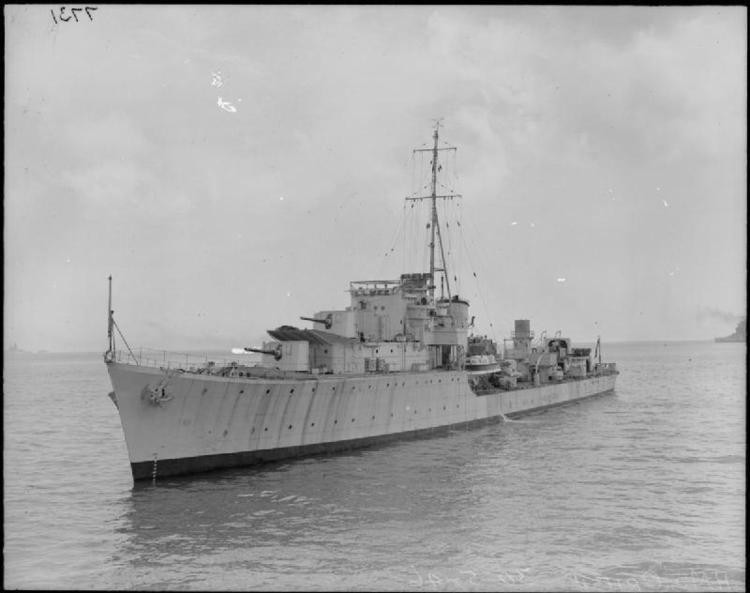Name HMS Oribi Laid down 15 January 1940 Decommissioned 1 January 1946 Launched 14 January 1941 Draft 4.11 m | Ordered 3 September 1939 Commissioned 5 July 1941 Construction started 15 January 1940 Length 105 m | |
 | ||
Honours andawards Norway 1941, Malta convoys 1941, North Africa 1942, Arctic convoys 1942-44, Atlantic 1943-44, Normandy 1944 | ||
HMS Oribi (G66) was an O-class destroyer of the Royal Navy. Following the style of her sister ships she was named with a word beginning with O. Originally she was to have been christened HMS Observer, but Because her building was sponsored by the South African government she was christened HMS Oribi, after the oribi, a South African antelope.In 1942,after a successful warship week,the ship was "adopted"by Havant, hampshire
Contents
Second World War service
Oribi was one of the destroyers that supported Operation Archery, the November 1941 commando raid on Norway, by shelling the islands and attacking German shipping in the sheltered anchorage. She also assisted to bring Norwegian nationals home after the raid to escape the German occupation.
She saw extensive action during the Arctic and North Atlantic convoys of the Second World War. These included Convoy ONS 5 in May 1943, regarded as the turning point of the Battle of the Atlantic.
Postwar service
Oribi was transferred to the Turkish Navy in 1946 and renamed Gayret, to replace a previous ship of that name requisitioned by the Royal Navy during the Second World War and lost during hostilities. She received the new pennant number D15 and was used as a headquarters ship.
